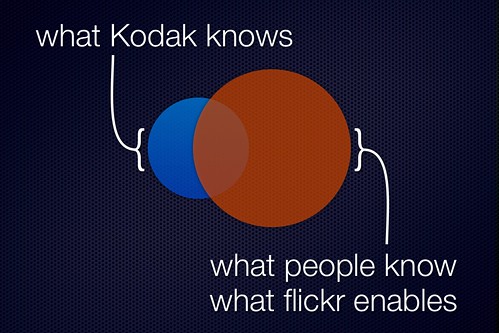My presentation for today’s hottest IT trends is nearly completely new, though it draws a number of pieces from my building web 2.0-native library services and remixability presentations. What it adds is an (even more) intense focus on the people that make up the web.
Denmark is among the most wired countries of Europe, and it’s especially interesting that more than half of Danes over 55 use the web at least once a week. Of course the prime minister blogs and is on MySpace and FaceBook (though the Microsoft connection is sad).
And rather than serving as a broadcast medium, delivering the same messages we see in TV and elsewhere to all these users, the web is enabling conversations between users. Conversations like these:
- “This washing machine is too noisy.”
- “If you liked Into Thin Air you’ll like Touching The Void better.”
- “Those National Guard documents look forged.” (Not all of these conversations lead to politically favorable conclusions.)
- “Hey, I just opened this bike lock with this plastic pen!”
- “People are dying.We need to do better.”
The point of the slide above is that Kodak’s understanding of the photo experience was narrower than the user’s understanding. Flickr is built for how people use photos (sharing, discussing, remembering), while Kodak is built around the transactions people will pay for (purchase of film, processing, printing). Once those transactions became irrelevant, Kodak became irrelevant. How are our libraries working to understand the information experience and remain relevant to today’s users?
The slides for my main talk are online in Quicktime and PDF format.
